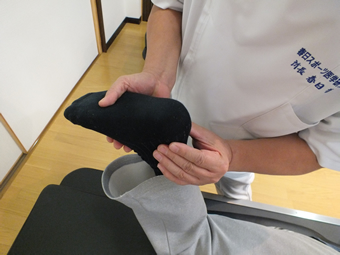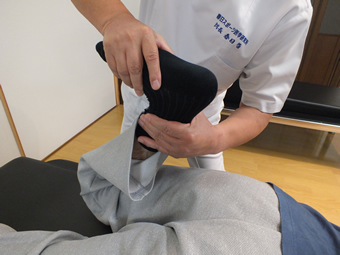

General consideration IV


- Symptom
- In most cases, this pain is caused by an inflammation of the long flexor muscle of great toe. Any running events as well as those that involve foot work equally have the risk of this injury. The plantar part includes spring ligaments called "plantar aponeurosis" and "plantar calcaneonavicular ligament". The tendon of the long flexor muscle of great toe runs below the plantar calcaneonavicular ligament—and above the plantar aponeurosis—through under the head of the first metatarsal bone to the thumb.
- Tamatare Remedy
- Tamatare Remedy recovers the metabolism efficiency of the related muscles considering not only the long flexor muscle of great toe but also the transverse head adductor hallucis muscle and the oblique head adductor hallucis muscle. This treatment recovers the passive stability of the longitudinal arch of foot and cures the problem quickly.
- Details
- With continuous and excessive stress on the big toe, the tendon of the long flexor muscle of great toe tips up from below the plantar calcaneonavicular ligament. However, the plantar calcaneonavicular ligament is a short ligament, and its shifting range is narrow. The long flexor muscle of great toe, therefore, is continuously pulled, so that it signals pain. It should be noted that this pain tends to be mistaken as an achilles tendonitis at clinics not specialized in sports injuries. The achilles tendon is the common tendon for the triceps surae muscle consisting of the gastrocnemius muscle, the soleus muscle, and the plantaris muscle. The pain of an achilles tendonitis will cure as soon as the overwork of the triceps surae muscle is stopped. Therefore, if your pain continues for a long period, suspect an inflammation of the long flexor muscle of great toe.



General consideration III







